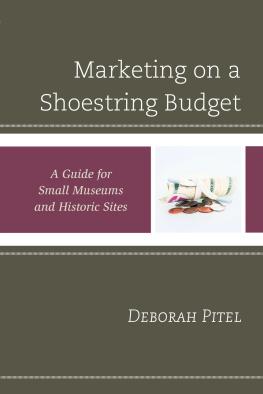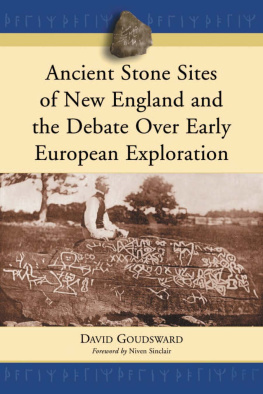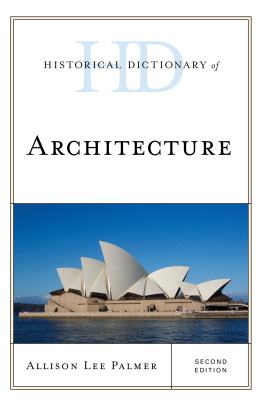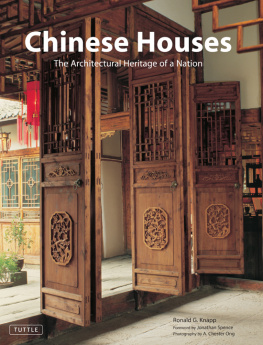
Contents
Gratitude is not only the greatest of virtues, but the parent of all others.
MARCUS TULLIUS CICERO
My sincere thanks go to those who have helped make this book possible: David Boenning, Martha and Peter Borovec, Dwight Cook, Patrick Coran, Mary Finn Cox, John Hinman, Donald Kantor, Coleman Kelly, Helder Lemos, Derick Martins, Jay McDaniel, Joyce Novak, Bruce Peters, and Dennis Walker.
A particular word of thanks to my brother, Joseph F. P. Regalbuto Jr., for his many hours reviewing the manuscript and for offering valued commentary.
The lines are fallen unto [us] in pleasant places;
yea, [we] have a goodly heritage.
PSALM 16
House museums are windows on the past. They are tangible links to Americas history and allow us to walk where our predecessors walked, to see the objects they touched, the books they read, and the interiors, gardens, and landscapes they saw.
More than one hundred historic houses are described in this guide. All are within the six states that make up New England. They date from the early seventeenth century to the threshold of our time, and the architectural styles reflect those which were popular over a period of four centuries. The homes of leaders and literati, merchants and millionaires, poets and Pilgrims, philosophers and farmers, seafarers and Shakers: These sites are crucial pieces of American history.
Each chapter lists the museums location, web address, and telephone number. As operating schedules often change from season to season and from year to year, and as admission fees can be ephemeral, they are not included here. Readers are encouraged to contact the house museum in advance of their visit for up-to-date visiting information.
It is my sincere hope that this guide will lead you, the reader, to townhouses, homesteads, mansions, farms, and castles which will be your windows on New Englands past and our goodly heritage.


GILLETTE CASTLE
Michael King / iStockphoto.com
67 River Road
East Haddam, CT 06423
Phone: 860-526-2336
www.ct.gov.deep/gillettecastle
Sited on the last and most southerly of the chain of hills known as the Seven Sisters, this estate was first named, appropriately, the Seventh Sister. The castle is the creation of William Hook Gillette (18531937), an actor, playwright, director, and novelist. Gillette designed every detail of his castle, including its gardens. It took a crew of twenty men five years to build his dream castle, which was completed in 1919. Differing from medieval European prototypes, Gillettes castle has a steel frame and is faced with local fieldstones. The Craftsman-style interior has hand-hewn southern white oak throughout.
Gillette spared no details. He fitted his home with personally designed features like built-in sofas, a table on tracks, forty-seven uniquely designed doors, door knobs, and locks. A series of hidden mirrors allowed him to keep an eye on the castles rooms (and guests!) from the vantage point of his bedroom.
Gillettes creativity extended to the grounds of his 142-acre estate. He had a narrow-gauge railroad with its own Grand Central Station, a wooden trestle bridge, a tunnel, walking paths, and a goldfish pond. The railroad tracks have since been pulled up and replaced with an additional walking trail.
William Hook Gillette died in 1937. In his will, he expressed his wish that his beloved estate not fall victim to a blithering sap-head who has no conception of where he is or with what surrounded. He would be pleased to know that Gillette Castle became the property of the state of Connecticut in 1943. The house went through an $11 million dollar restoration that was completed in 2002.
35 Mountain Road
Farmington, CT 06032
Phone: 860-677-4787
www.hillstead.org
A great new house on a hillside.
HENRY JAMES
Hill-Stead Museum was the creation of Theodate Pope Riddle (18671946). She grew up in Cleveland and first came to Farmington to attend Miss Porters School. She survived the sinking of the Lusitania when it was torpedoed in 1915 and married Wallace Riddle the following year.
Mrs. Riddle was one of Americas first women to be trained as an architect, and Hill-Stead was her first building design. She worked with the firm of McKim, Mead, & White in drawing up the plans. The house was built for her father, Alfred Atmore Pope, between 1898 and 1901, and Theodate later inherited it from her parents. When she died in 1946, she willed that it be a memorial to them and a museum for the benefit and enjoyment of the public. She further stipulated that it remain as she left it, with its original furnishings and artwork.
A white Colonial Revival house porch, with its tall columns, is somewhat reminiscent of that at George Washingtons home, Mount Vernon. The interior has nineteen gracious rooms covering 33,000 square feet. Both Theodate and her parents were collectors of art, especially Impressionist works. There are paintings by Claude Monet, Mary Cassatt, douard Manet, Edgar Degas, James McNeill Whistler, and others.
The 152-acre estate includes an eighteenth-century farm house, a barn, farm buildings, a carriage house with a theater, broad lawns, a newly restored sunken garden, an octagonal flower garden, and a pond.
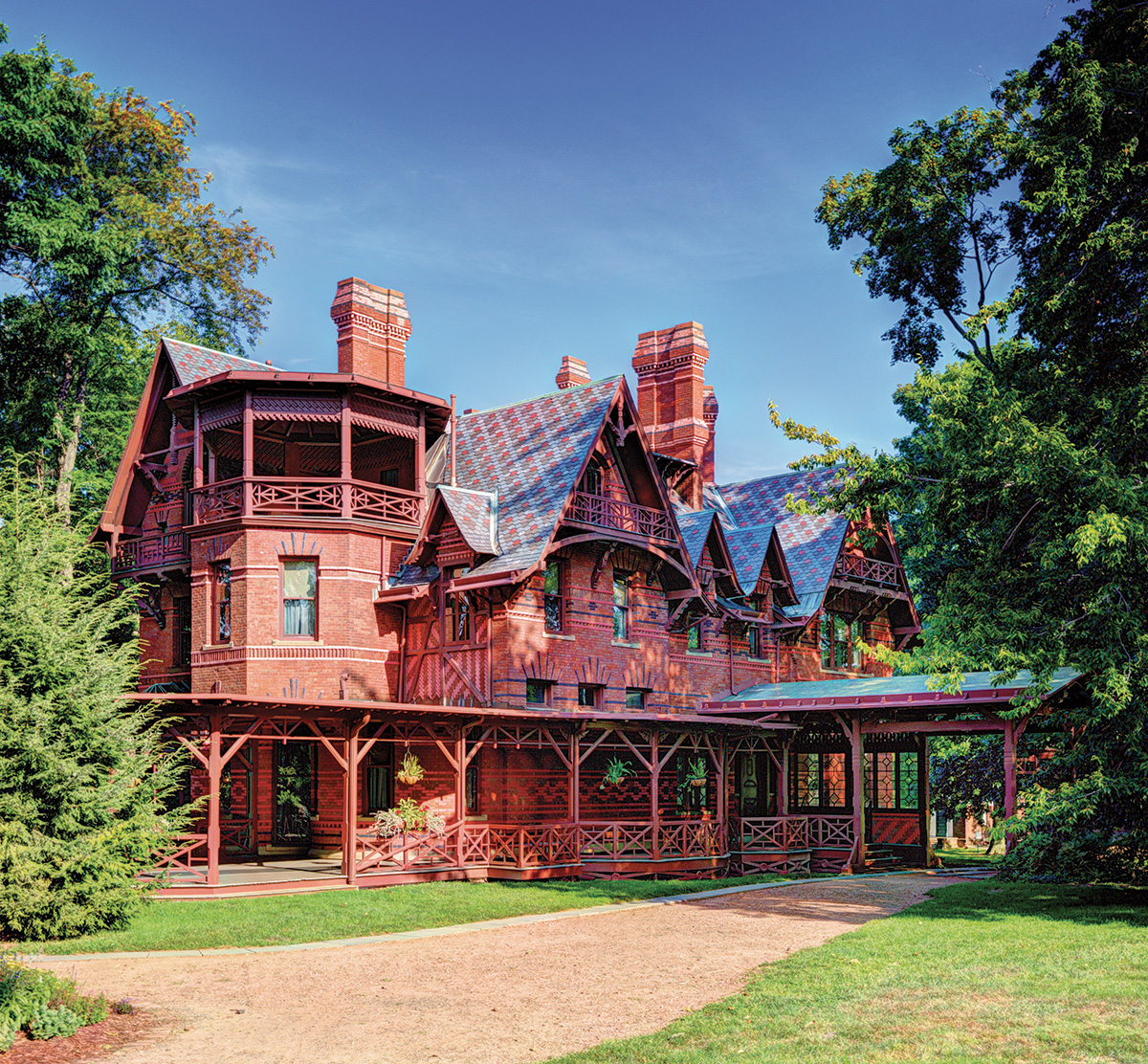
THE MARK TWAIN HOUSE
SeanPavonePhoto / iStockphoto.com
351 Farmington Avenue
Hartford, CT 06105
Phone: 860-247-0998
www.marktwainhouse.org
It is a homeand the word never had so much meaning before.
MARK TWAIN
Mark Twain, the greatest American humorist of his age and the father of American literature, first came to Hartford in 1868. At that time the city was a major publishing center. He and his wife, Olivia (Livy), moved to Hartford in 1871, and their newly built home was completed in 1874. Some of his best-loved works were written here, including A Connecticut Yankee in King Arthurs Court, The Adventures of Tom Sawyer, The Adventures of Huckleberry Finn, The Prince and the Pauper, The Gilded Age, and Life on the Mississippi.
Architect Edward Tuckerman Potter designed the house in the Victorian Gothic style. The house was renovated and enlarged in 1881. In the end, Twains costs were $31,000 for the land, $70,000 for the house, and $22,000 for its furnishings.
Though Twain was a successful author, he lost a good portion of his earnings through poor investments. For additional income, he decided to lecture in Europe in 1895 and 1896, traveling with Livy and their daughter Clara. Their other daughters, Jean and Susy, remained at home in Hartford. Susy died of spinal meningitis while her parents were in Europe. Following this, Mark and Livy sold their Hartford house in 1903.
The house was subsequently used as a school, a library, and an apartment house. It was saved from the wreckers ball in 1929 and restored between 1955 and 1974. A major, multi-milliondollar renovation was completed in 1999, and in 2003 the Webster Bank Museum Center was opened.
Next page

